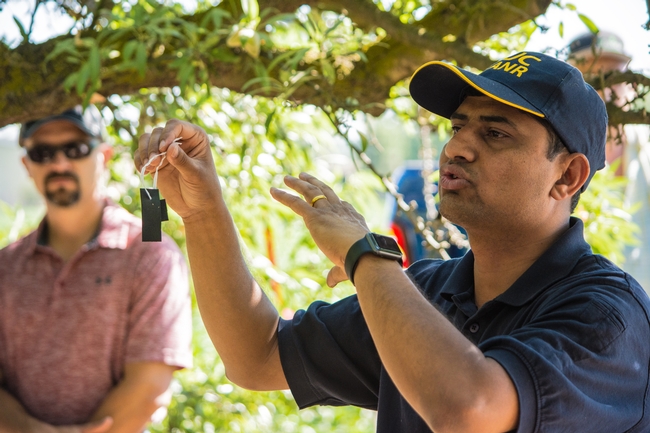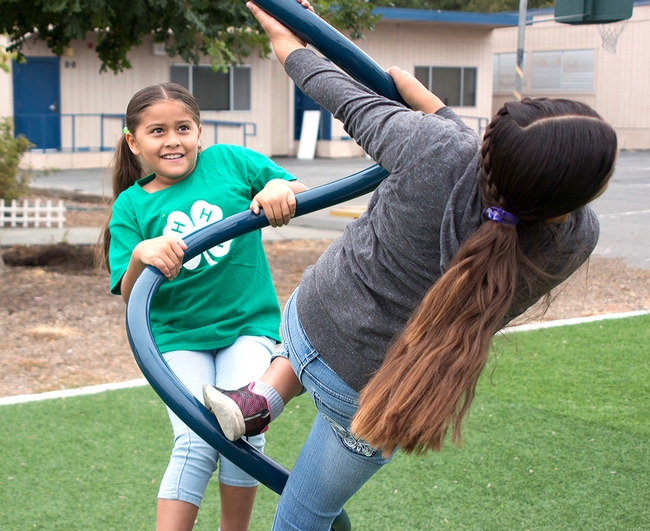
Posts Tagged: annual
Dryland Pasture and Indaziflam-A Case Study
Winter annual grasses are one of the major invaders on rangelands in the intermountain region. They...
Integration of grazing and herbicide application improves management of barb goatgrass and medusahead in pasture and rangelands
From the California Agriculture 75(2):83-89....
UC ANR is improving California life with science-based solutions
UC Agriculture and Natural Resources reflected on some of its most compelling achievements in a report that provides an overview of the sweeping impacts its scientists and educators made in 2018.
UC ANR's impacts are felt across the state – in places where water is scarce, climate is changing farming practices, children need a little extra support to get to college, and families can use guidance to stretch their food budgets. UC ANR steps in with programs and services.
Of the hundreds of ways UC ANR impacts California lives and livelihoods, 40 are highlighted in the new publication, Working for the Benefit of All Californians: 2018 UC ANR Annual Report.
UC ANR has identified the specific parts of California where its vast team of highly trained academics can effect positive change. The organization is working to promote economic prosperity, safeguard sufficient safe and healthy food for all, protect the state's natural resources, promote healthy people and communities, develop a qualified workforce, build climate change resilience in communities and ecosystems, and develop an inclusive and equitable society. These values touch every person in the state.
During the period covered in the report, robust research and education programs supported agricultural communities. For example, UC ANR scientists improved the ability to predict beet curly top virus, avoiding losses approaching $100 million in processing tomatoes. A workshop offered by UC ANR educators on low-stress livestock handling convinced all the participants to incorporate the practices on their ranches. Online and in-person workshops provided to urban farmers resulted in new food safety plans for nearly all of the growers involved.
Families, farmers and natural resource managers are facing the prospect of climate change and looking for ways to continue prospering under uncertain conditions. Increasingly ferocious wildfires are causing serious losses to ranchers. UC ANR provided information on management practices to safeguard resources, prevent soil erosion and estimate the cost of forage losses so ranch owners can prepare loss claims. UC ANR has been instrumental in development of a website, Cal-Adapt.org, a clearing house to collect and disseminate climate change data.
Families and youth are a focus of UC ANR nutrition research, nutrition education and programs such as 4-H and CalFresh Healthy Living, UC. One UC ANR researcher collaborated with the Karuk, Yurok and Klamath tribes to identify culturally sound solutions to reduce food insecurity. In two Northern California counties, students were introduced by UC ANR educators to 36 local produce items. Their selection, consumption and interest in the produce served at lunchtime increased. UC ANR piloted a program that gets Latinx youth outside for environmental education.
Making food safer, enriching children's lives, extending reliable nutrition education and improving the productivity on California farms and ranches add up to significant value to the recipients of the services and to all Californians by making the state a better place to live and work.
Read more:
UC Agriculture and Natural Resources Public Value Statements
Summer Annual Weeds
As the summer heat is finally nearing its end, and its officially fall on the calendar, there...
How This Tiny Warrior Crashed the Hammock Lab Water Balloon Battle
He wasn't invited, but he crashed the party anyway. A few minutes before the 16th annual Bruce...
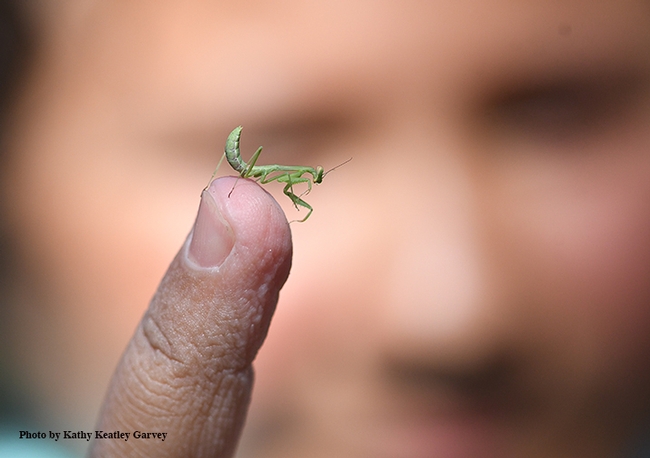
Jasmine Morisseau, 10, holds a male praying mantis, a Stagmomantis limbata, the tiniest warrior at the Bruce Hammock Lab Water Balloon Battle. (Photo by Kathy Keatley Garvey)
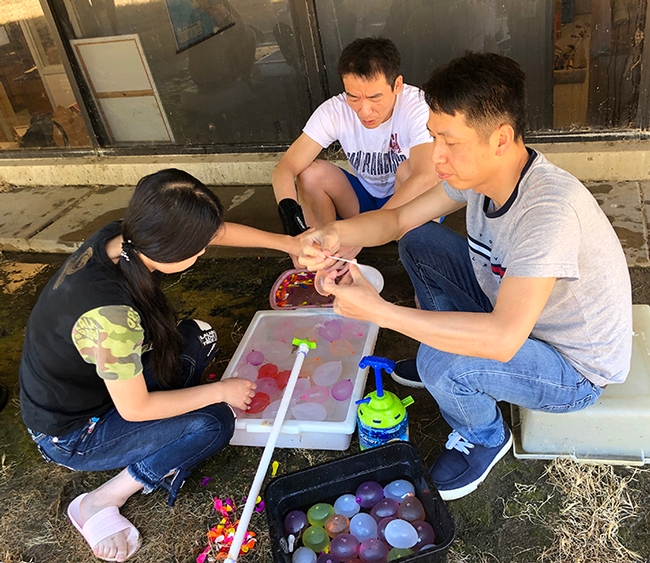
Filling water balloons for the Bruce Hammock Lab Water Balloon Battle are (from left) Yuan Ding, visiting graduate student; Dongyang Li, assistant project scientist; and Deguang Liu, visiting scholar. (Photo by Kathy Keatley Garvey)
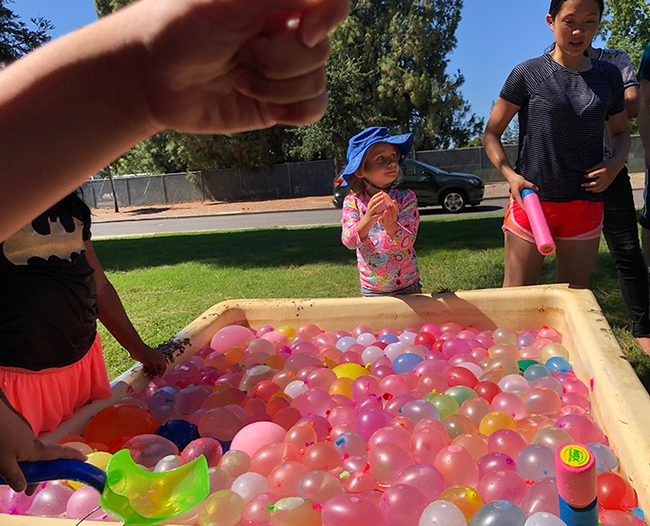
Some 2000 colorful water balloons are ready to be tossed. In the background is water warrior Lea Barnych, 4, whose mother Natalia Vasylieva is a researcher in the Bruce Hammock lab. (Photo by Kathy Keatley Garvey)
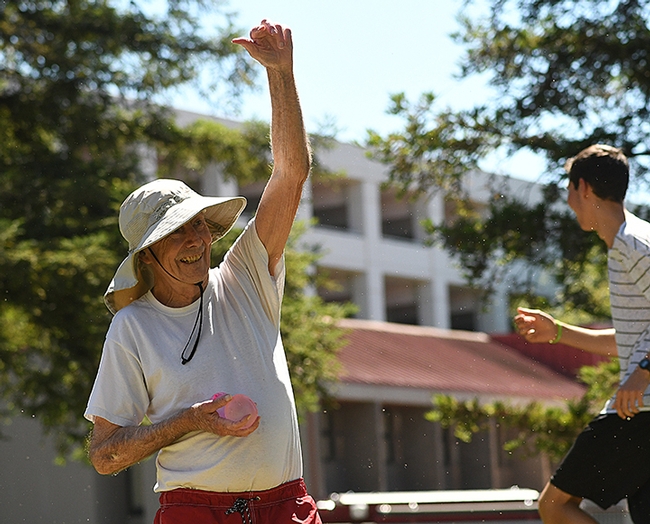
UC Davis distinguished professor Bruce Hammock catches a water balloon tossed at him. (Photo by Kathy Keatley Garvey)
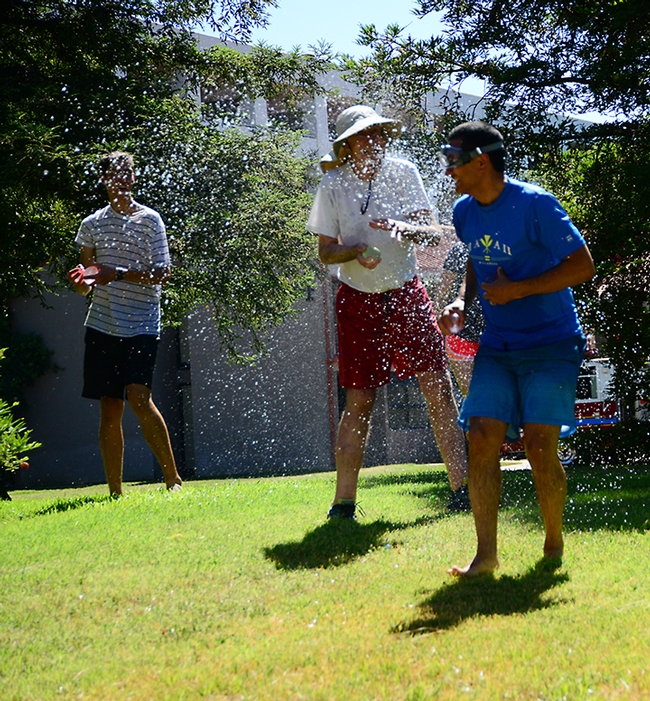
Splash! It was an international soakfest at the Bruce Hammock Lab Water Balloon Battle, with eight countries represented. That's Hammock in the center getting sprayed. (Photo by Kathy Keatley Garvey)
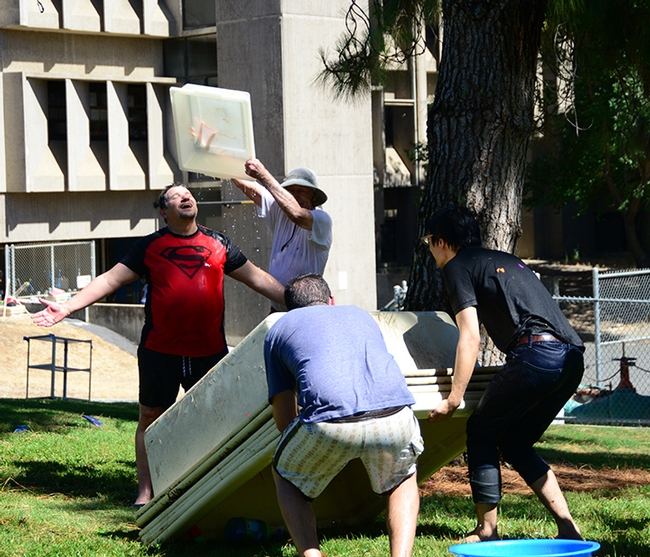
Christophe Morisseau, a researcher in the Hammock lab and coordinator of the Bruce Hammock Lab Water Balloon Battle, gets drenched. (Photo by Kathy Keatley Garvey)
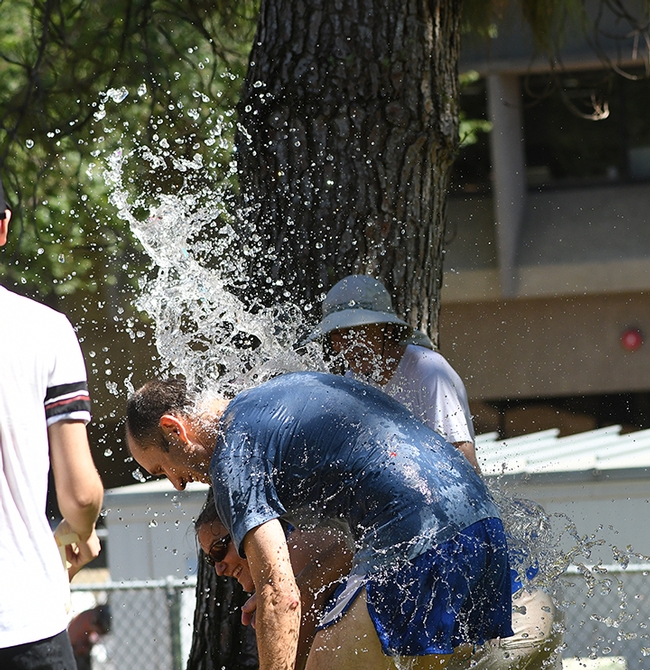
Gregory Zebouni, account manager for the Hammock lab, gets drenched. (Photo by Kathy Keatley Garvey)
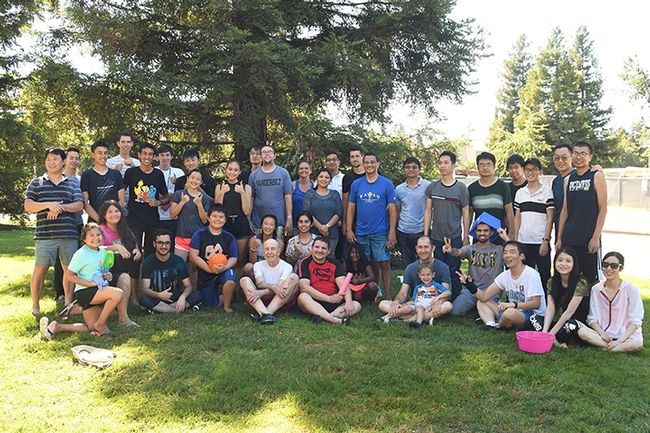
The water warriors pose for a group portrait following the 16th annual Bruce Hammock Lab Water Balloon Battle. (Photo by Kathy Keatley Garvey)

